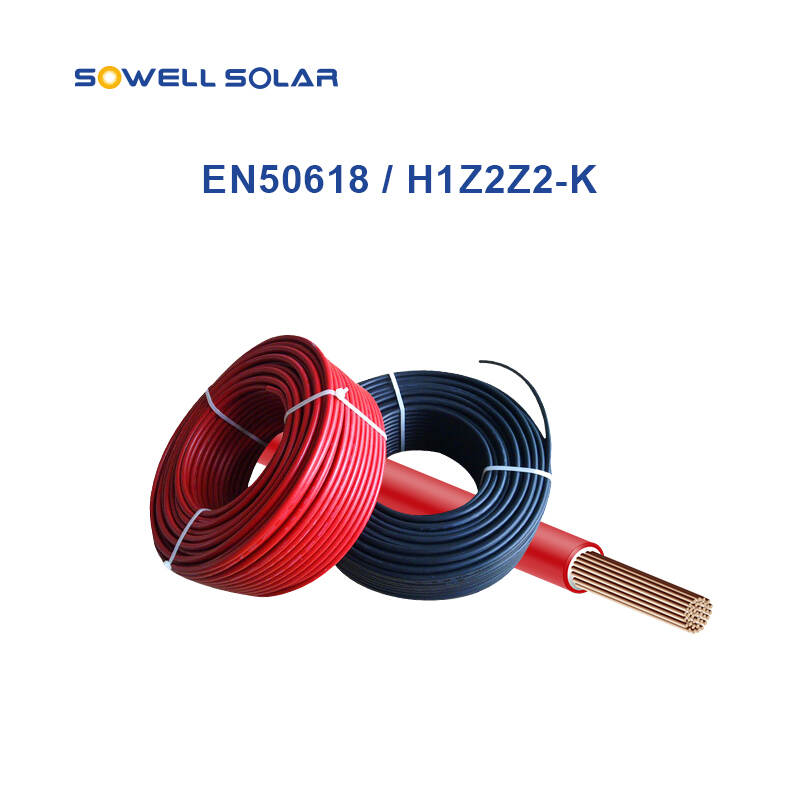Email format error
Email cannot be empty
Email already exists
6-20 characters(letters plus numbers only)
The password is inconsistent
Email format error
Email cannot be empty
Email does not exist
6-20 characters(letters plus numbers only)
The password is inconsistent

News

What Is Tinned Copper Solar Cable and Why It Matters
When people think of solar power, they picture shiny panels, inverters, and maybe a battery pack tucked into a cabinet. But one often-overlooked component plays a critical role in the safety, efficiency, and longevity of every solar energy system: the cable.
And not just any cable—the tinned copper solar cable.
You may not have heard much about it before, but if you're designing, installing, or maintaining solar systems, especially in challenging environments, this cable might just be the unsung hero that keeps everything running smoothly.
So, What Exactly Is Tinned Copper?
At its core, tinned copper is exactly what it sounds like: copper wire that has been coated with a thin layer of tin.
Why tin? It protects the copper from corrosion—especially in moist, salty, or chemically reactive environments. Think: coastal regions, rooftops exposed to acid rain, high-humidity zones, or even the underside of a solar panel that's sweating under the sun.
In a solar cable, this added protection makes a big difference.
What Makes Tinned Copper Solar Cables So Useful?
Let’s break it down:
Corrosion Resistance
Over time, untreated copper can oxidize when exposed to air, moisture, or contaminants—leading to poor conductivity, heat buildup, or even failure. Tinned copper resists this, making it ideal for outdoor and long-term installations.
Improved Soldering
Tinned wires are easier to solder. The tin coating melts quickly, forming a solid connection with less effort. That means stronger joints, faster installations, and less risk of connection failure over time.
Longer Lifespan
With better resistance to harsh environments, these cables last longer. They need fewer replacements and less maintenance—an important factor for large solar farms or rooftop systems where accessing wiring can be time-consuming and expensive.
Flexible and Durable
Many tinned copper solar cables are made with fine copper strands. They’re more flexible, easier to install in tight spaces, and less likely to crack under bending stress.
Where Are Tinned Copper Solar Cables Used?
You’ll find them in places where durability really matters:
-
Solar farms exposed to heat, wind, and UV radiation
-
Rooftop installations in cities or coastal zones
-
Battery connections in hybrid/off-grid systems
-
Marine solar systems (yes, boats use solar too!)
-
RV and mobile solar kits that move through various climates
These cables are often designed to meet standards like EN 50618, IEC 62930, or UL 4703, which ensures safety and compatibility for photovoltaic use.
Isn't This Overkill for Normal Systems?
It might seem like an upgrade you don't need—until something goes wrong.
The truth is, cables are usually the last thing people think about... and the first to cause headaches when they degrade.
A failing cable can mean voltage drops, heat buildup, or even electrical fires in worst-case scenarios. And since cables are usually embedded or hidden, replacing them can be expensive and disruptive.
So even for small or “normal” systems, reliable cabling matters.
How to Know If You Need Tinned Copper Cables
Ask yourself:
-
Is your installation in a humid, coastal, or industrial area?
-
Is the system expected to run for 20+ years with minimal maintenance?
-
Will the cables be exposed to sunlight, rain, or chemical vapors?
-
Are you looking for peace of mind over the system’s lifetime?
If you answered “yes” to any of these, tinned copper solar cable is a smart choice—not just a technical detail.
Look Beyond the Copper
While tinned copper is the core, the insulation and jacket material are just as important.
Look for cables that are:
-
UV-resistant
-
Halogen-free
-
Flame-retardant
-
Rated for wide temperature ranges
These features, combined with tinned copper, create a cable you can truly trust.
Final Thoughts:
Solar energy is about smart investments. Most people focus on big-ticket items like panels or batteries, but real reliability comes from the things you don’t see—like the cables that tie everything together.
By choosing tinned copper solar cables, you’re building in safety, durability, and long-term performance from the ground up.
So next time you're planning a solar project, don't overlook the wiring. It might be the smallest component—but it's also one of the most important.
Want to learn more about choosing the right cable for your solar project? Stay tuned to our blog for more practical insights and expert advice.

